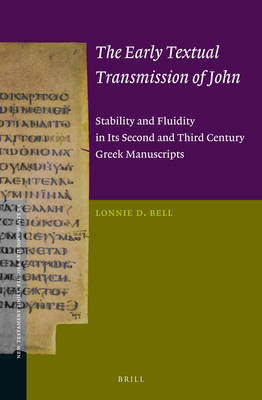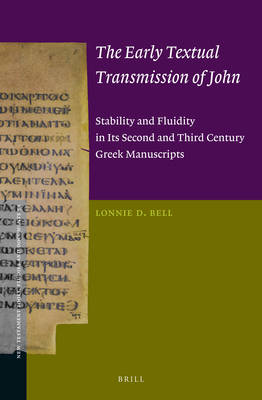
- Afhalen na 1 uur in een winkel met voorraad
- Gratis thuislevering in België vanaf € 30
- Ruim aanbod met 7 miljoen producten
- Afhalen na 1 uur in een winkel met voorraad
- Gratis thuislevering in België vanaf € 30
- Ruim aanbod met 7 miljoen producten
Zoeken
The Early Textual Transmission of John
Stability and Fluidity in Its Second and Third Century Greek Manuscripts
Lonnie Bell
€ 193,95
+ 387 punten
Omschrijving
In The Early Textual Transmission of John Lonnie D. Bell utilizes a fresh approach for assessing the character of transmission reflected in the second and third century Greek manuscripts of the Gospel of John. The textual transmission of New Testament writings in the period prior to the fourth century has been characterized by a number of scholars as error-prone, free, fluid, wild, and chaotic. This study is an inquiry into the validity of this general characterization. Since John is the most attested New Testament book among the early papyri, is the best attested in the second century, and has the highest number of papyri that share overlapping text, it serves well as a case study into the level of fluidity and stability of the New Testament text in the earliest period of transmission.
Specificaties
Betrokkenen
- Auteur(s):
- Uitgeverij:
Inhoud
- Aantal bladzijden:
- 280
- Taal:
- Engels
- Reeks:
- Reeksnummer:
- nr. 54
Eigenschappen
- Productcode (EAN):
- 9789004360754
- Verschijningsdatum:
- 22/03/2018
- Uitvoering:
- Hardcover
- Formaat:
- Genaaid
- Afmetingen:
- 160 mm x 236 mm
- Gewicht:
- 498 g

Alleen bij Standaard Boekhandel
+ 387 punten op je klantenkaart van Standaard Boekhandel
Beoordelingen
We publiceren alleen reviews die voldoen aan de voorwaarden voor reviews. Bekijk onze voorwaarden voor reviews.











